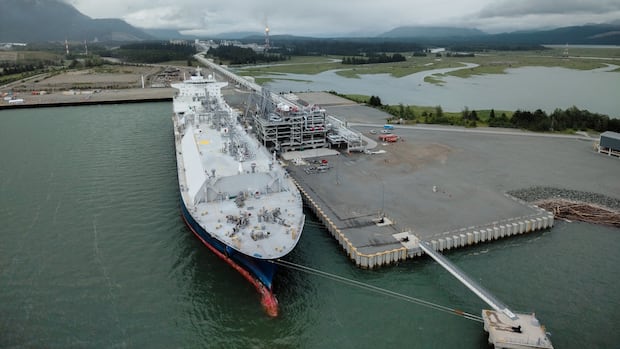For four days in a row as of Thursday, natural gas prices in Alberta have fallen below zero dollars per gigajoule.
“It’s all the way from -$0.85, -$1, -$0.50. So, it’s not good. It is problematic,” said Jeremy McCrea, an oil and gas analyst with BMO Capital Markets.
McCrea said it isn’t all that uncommon for prices to go negative — Alberta is no stranger to a volatile market. But he said it has been more rocky than usual this year.
He blames that, at least partially, on issues with LNG Canada. That’s the major project underway in British Columbia that allows companies to export liquefied natural gas to markets in Asia. It officially began operations over the summer.
Deemed by many as a “game changer,” there were high hopes the project would boost natural gas prices across western Canada.
But that hasn’t happened.
“With the ramp up of LNG Canada phase one, there was a lot of production and producers who brought on maybe a little too much more gas than we were thinking LNG could accommodate here in the near term,” said McCrea.
And there isn’t enough storage available to hold that oversupply, he said.
While it plays a big role, that isn’t the only factor in these lower prices. There’s also the warmer-than-average fall weather that’s kept Albertans from turning their furnaces on and an extended season of pipeline maintenance, according to McCrea.
Still, he isn’t too concerned.
Neither is Andrew Botterill, an energy partner at Deloitte who writes forecasts on oil and gas prices. He sees this as a temporary situation and symptom of Alberta’s natural gas oversupply — not a significant structural issue.
“This is just more something that averages out over the weeks and months and that’s why our companies don’t buy and sell our natural gas every day of the week,” said Botterill.
Botterill is forecasting that things will turn for the better, from his perspective, when temperatures drop and local demand for natural gas surges.
Longer term, both McCrea and Botterill are banking on LNG Canada ramping up to full capacity to fix the problem. That’s expected to happen sometime in 2026.
